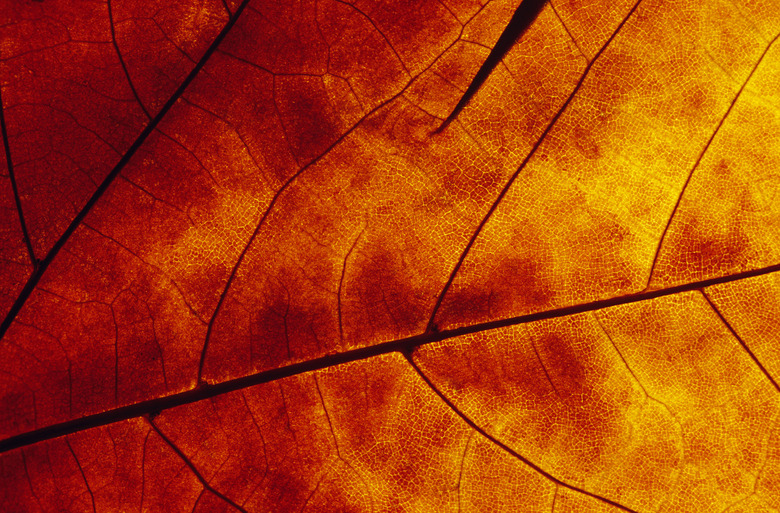Simple Chromatography Experiments
Chromatography is a method you can use to separate and analyze the individual components of complex mixtures, ranging from ink to amino acids to vapors. Chromatography requires a stationary phase as an immovable platform that the mobile phase — the water or other solvent to carry the mixture to be separated — moves through. Porous household papers like paper towels and coffee filters make an inexpensive substitute for chromatography paper.
Ink
Ink
Paper chromatography can separate the colors in black ink using simple household materials. Draw a pencil line one inch from the end of a coffee filter paper strip. Draw a short line along the pencil line using a water-soluble black marker. Pour just enough water to cover the bottom of a one-liter jar, and place the bottom edge of the paper into the jar, making sure the pencil line is above the water level. The solvent will travel up the paper, separating the black ink into multiple color shades. Remove the paper and measure the relative proportions of color you obtain when the solvent stops moving or is within one inch from the top.
Tablet Candy
Tablet Candy
This experiment shows the different colors used to make fruit-flavored tablet candies. Draw a pencil line one centimeter from the bottom of a piece of chromatography paper. Use a few drops of water to dissolve each candy. Paint several drops of the color in a small spot on the line. Clean the brush and paint a different color of candy two centimeters from the first dot on the line. After you've placed all of the colors on the line, write the name of each candy color by the corresponding spot. Roll the paper into a cylinder, attach the ends using staples, and place in a beaker with water just touching the bottom of the paper. Take the paper out and analyze the color separation once the water runs up to within an inch from the top of the paper.
Leaf
Leaf
A leaf has several pigments that can be separated using chromatography. Grind finely cut leaves, along with a small pinch of sand and a solvent such as propanone, using a mortar and pestle for three minutes. Draw a pencil line three centimeters from the bottom of a strip of chromatography paper and use a fine glass tube to place seven spots of this leaf mixture on the line. Wait for each spot to dry before adding another one directly on top of the previous one. Place the bottom edge of the paper in a beaker with propanone just covering the bottom. Remove the paper when the propanone is near the top or has stopped moving up the paper. Because propanone is highly flammable, wear protective goggles when doing this experiment.
Food Coloring
Food Coloring
Although commercial food colorings may seem like they're a single color, they're actually made up of a combination of dyes that can be separated using chromatography. Draw a pencil line across the bottom of a chromatography paper strip, two centimeters from the bottom. Place spots of food coloring on the line, making sure the colors are concentrated in a small area and at least three centimeters apart. Dissolve 100 milligrams of table salt into 100 milliliters of water and pour just enough of this mixture to cover the base of the beaker or jar. Wrap the paper into a cylinder shape and secure it with a staple before placing it in the beaker. Remove the paper from the beaker when the solution has moved to within two centimeters from the top.
Cite This Article
MLA
Battaglia, Gina. "Simple Chromatography Experiments" sciencing.com, https://www.sciencing.com/simple-chromatography-experiments-9589/. 24 April 2017.
APA
Battaglia, Gina. (2017, April 24). Simple Chromatography Experiments. sciencing.com. Retrieved from https://www.sciencing.com/simple-chromatography-experiments-9589/
Chicago
Battaglia, Gina. Simple Chromatography Experiments last modified March 24, 2022. https://www.sciencing.com/simple-chromatography-experiments-9589/
